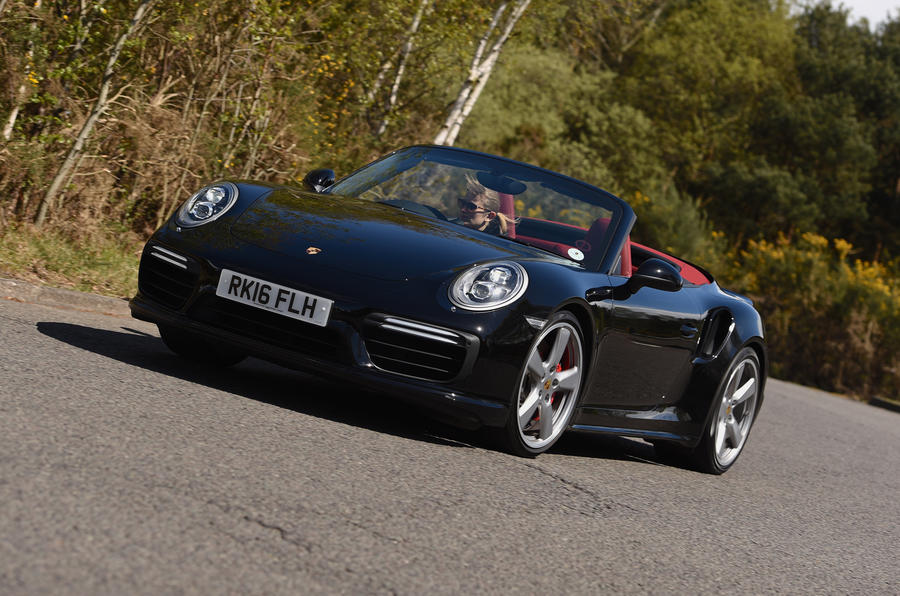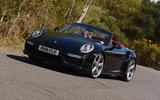What is it?
The Porsche 911 Turbo is a hammer-blow of a car. And we’re talking about a proper hammer. Thor’s hammer, that sort of thing. None of your flimsy budget tools.
Even in the Cabriolet variant tested here, the technology that underpins the Turbo could virtually be the stuff of mythology because it’s further enhanced the endearingly bonkers, two-faced nature of the 911 Turbo; stomach-writhingly brutal one moment, and pussycat pleasant the next.
The twin-turbo 3.8-litre flat-six engine gets new turbos with bigger compressors that lift power and torque to 532bhp and 489lb ft (524lb ft with overboost), with the latter in full force from 1950-5000rpm.
Adaptive dampers, Sport Chrono pack complete with driving modes, four-wheel steer and the seven-speed dual clutch PDK automatic gearbox are all standard, as is – of course – the active four-wheel drive system.
The problem is that the Turbo has always been seen as somewhat less dynamically effervescent than its more purist, rear-wheel drive counterparts. More about the straight-line pace, and less about the twisty stuff – and that goes even more for the heavier convertible.
So, have the upgrades made the new 911 Turbo Cabriolet more thrilling and purist-appropriate, or does it remain one of the least recommendable 911s?
What's it like?
Better than ever, and critically – better handling than ever. Our test car did without the active anti-roll bars (PDCC), but still delivered an edge of playfulness to its handling that’s new to the previously more neutral-feeling Turbo. It turns in with the same gut-twisting grip levels, but a well-timed lift introduces some cheeky, manageable oversteer, or you can simply adjust your line with more prudent throttle adjustments. It’s subtle, and there’s no doubting that the Turbo remains a more heavy-handed thing than the rear-wheel-drive Carrera models, let alone the sublime GT3, but it is now more engaging than it was.
And the sufferance brought about to the handling by the soft-top? Honestly, while the extra weight might tell in understeer kicking in a fraction earlier, you’d need to drive the Cabriolet and Coupé models back-to-back to really feel the difference. By any standard, scuttle shake is pretty much non-existent, and anybody who likes a drop-top really isn’t going to be disappointed in any way.
The more noticeable compromise is in ride comfort, where the Cabriolet resorts to a more jarring initial bump absorption than the coupé. It’s still more than acceptable (despite standard 20in alloys) given that this is a seriously intense sports car, but even in Comfort mode, you’ll occasionally be wincing at the very short vertical spring travel and – over sharp-edged intrusions - slightly brittle-feeling damping.
Overlaying all of this is the devastation of that engine. It’s a proper kick in the guts, the way it goes from mooch to rampage in a heartbeat. Provided it’s in Sport or Sport Plus modes to gee the gearbox into rapid-fire mode, you get a fraction of a pause before it fires you forward. In the more moderate ebb and flow of real-world use, it remains a gut-twistingly potent scale of performance that you can use as aggressively or sedately as you wish given its unintimidating power delivery.






































Join the debate
Add your comment
Amazing performance, but...
I can see why in the US comfort rules over sporting, as no one can drive fast there, yet everyone can enjoy the comfort/luxury barges.
The World's Worst Cars
Time was...but it ain't no more...
servicing stop reviews